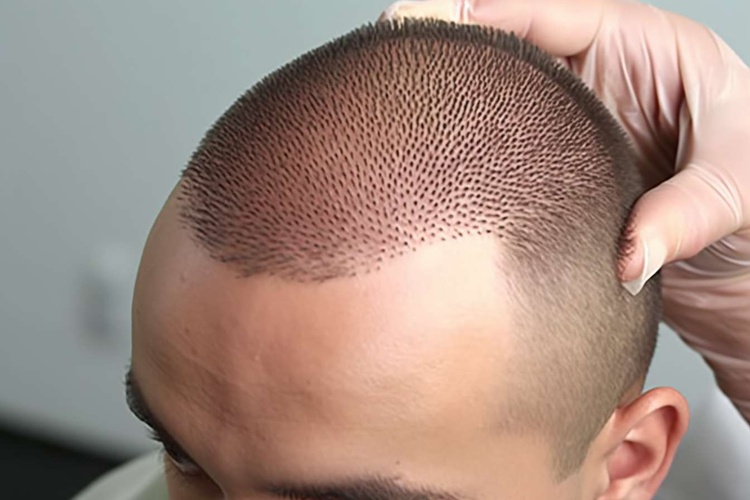Find more Hair Transplant Clinics
Hair loss affects millions of people worldwide, leading many to explore surgical restoration options. Hair transplantation has become an increasingly popular solution for those seeking to restore natural-looking hair growth. This medical procedure involves relocating hair follicles from donor areas to regions experiencing thinning or baldness. Understanding the different techniques, costs, and what to expect can help you make an informed decision about whether this treatment is right for you.

Hair transplantation represents a significant advancement in addressing hair loss, offering permanent results for those struggling with pattern baldness or thinning hair. The procedure has evolved considerably over the past decades, with modern techniques providing natural-looking outcomes that were previously impossible. Whether you are considering this option or simply researching available solutions, understanding the fundamentals of hair restoration surgery is essential.
Understanding Hair Transplant Cost
The financial investment required for hair restoration surgery varies significantly based on multiple factors. Geographic location plays a substantial role, with procedures in major metropolitan areas typically commanding higher prices than those in smaller cities. The extent of hair loss, number of grafts needed, and the specific technique employed all influence the final cost.
Generally, hair transplantation is priced per graft, with each graft containing one to four hair follicles. The total number of grafts required depends on the size of the area being treated and the desired density. Smaller procedures addressing early hair loss may require 1,000 to 2,000 grafts, while more extensive restoration can involve 3,000 to 5,000 grafts or more.
Additional factors affecting pricing include the surgeon’s experience and reputation, facility overhead costs, and whether advanced technologies are utilized during the procedure. Some clinics offer package pricing, while others charge separately for consultation, procedure, and follow-up care.
Prices, rates, or cost estimates mentioned in this article are based on the latest available information but may change over time. Independent research is advised before making financial decisions.
Choosing Between FUE vs FUT Hair Transplant
Two primary surgical techniques dominate modern hair restoration: Follicular Unit Extraction (FUE) and Follicular Unit Transplantation (FUT). Each method has distinct advantages and considerations that may make one more suitable than the other depending on individual circumstances.
FUE involves extracting individual follicular units directly from the donor area using small punch tools. This technique leaves tiny circular scars that are virtually undetectable, allowing patients to wear shorter hairstyles without visible scarring. The procedure typically takes longer and may cost more per graft, but recovery time is generally shorter with less post-operative discomfort.
FUT, also known as strip harvesting, involves removing a strip of scalp from the donor area, from which follicular units are dissected under microscopes. This method can harvest a larger number of grafts in a single session and is often more cost-effective. However, it leaves a linear scar that may be visible with very short hairstyles. Recovery may involve slightly more discomfort, though modern closure techniques have significantly improved outcomes.
The choice between these techniques depends on factors including the amount of coverage needed, hair characteristics, lifestyle considerations, and budget constraints. Consulting with experienced surgeons can help determine which approach aligns best with your specific situation.
What Hair Restoration Surgery Involves
Hair restoration surgery is typically performed as an outpatient procedure under local anesthesia. The process begins with careful planning and design of the hairline and treatment areas to ensure natural-looking results that complement facial features and age appropriately over time.
During the procedure, hair follicles are harvested from donor areas, usually the back and sides of the scalp where hair is genetically resistant to balding. These follicles are then meticulously prepared and implanted into tiny incisions created in the recipient area. The surgeon’s skill in placing grafts at proper angles and densities is crucial for achieving natural results.
The duration of the procedure varies based on the number of grafts being transplanted, ranging from four to eight hours or more for extensive sessions. Patients remain awake and comfortable throughout, often able to watch television or listen to music. Post-operative care includes following specific washing instructions and avoiding strenuous activities for a period to ensure optimal graft survival.
Comparing Clinic Options and Cost Estimates
When researching hair restoration options, comparing different clinics and their offerings helps ensure you receive quality care at a fair price. The following table provides general cost estimations and features of typical clinic categories:
| Clinic Type | Geographic Region | Cost Estimation per Graft | Key Features |
|---|---|---|---|
| Premium Urban Clinics | North America/Western Europe | $4 - $10 | Experienced surgeons, advanced technology, comprehensive aftercare |
| Mid-Range Regional Clinics | Various Developed Countries | $2 - $5 | Qualified practitioners, proven techniques, standard facilities |
| Medical Tourism Destinations | Turkey, India, Mexico | $1 - $3 | High volume practices, competitive pricing, package deals |
| Specialized Research Centers | Major Medical Hubs | $5 - $12 | Cutting-edge techniques, clinical trials, academic expertise |
Prices, rates, or cost estimates mentioned in this article are based on the latest available information but may change over time. Independent research is advised before making financial decisions.
When evaluating clinics, consider factors beyond cost alone. Surgeon credentials, patient reviews, before and after portfolios, and the quality of patient care all contribute to successful outcomes. Consultation processes should be thorough, with realistic expectations set regarding results and recovery.
Reviewing Hair Transplant Before After Results
Examining before and after photographs provides valuable insight into what hair transplantation can realistically achieve. Reputable clinics maintain extensive portfolios showcasing various patient outcomes, demonstrating their capabilities across different hair types, loss patterns, and restoration goals.
When reviewing these images, look for natural-looking hairlines that complement facial structure rather than appearing artificial or overly dense. Pay attention to cases similar to your own situation in terms of age, hair characteristics, and extent of loss. Quality results show gradual density that mimics natural hair growth patterns.
It is important to understand that transplanted hair goes through a growth cycle. Initial shedding occurs within the first few weeks after surgery, which is normal and expected. New growth typically begins around three to four months post-procedure, with significant improvement visible by eight to twelve months. Final results are generally assessed at 12 to 18 months when full maturation has occurred.
Patient testimonials accompanying visual results can provide additional perspective on the experience, recovery process, and satisfaction levels. However, remember that individual results vary based on numerous factors including hair characteristics, healing capacity, and adherence to post-operative care instructions.
Making an Informed Decision About Hair Restoration
Choosing to undergo hair transplantation is a significant decision that requires careful consideration of multiple factors. Beyond the financial investment, patients should evaluate their expectations, understand the commitment required for proper healing, and recognize that results develop gradually over time.
Consultation with qualified surgeons is essential for determining candidacy. Factors such as donor hair availability, hair characteristics, scalp laxity, and overall health all influence whether someone is a suitable candidate and what results can be realistically achieved. Some individuals may benefit from combining surgical restoration with medical treatments to optimize and maintain results.
Researching thoroughly, asking detailed questions during consultations, and taking time to make an informed choice contributes to satisfaction with the outcome. Hair transplantation can provide life-changing results for appropriate candidates, restoring not only hair but also confidence and quality of life. Understanding the process, techniques, costs, and realistic expectations ensures you approach this decision with the knowledge needed to choose the path that best serves your individual needs and goals.



